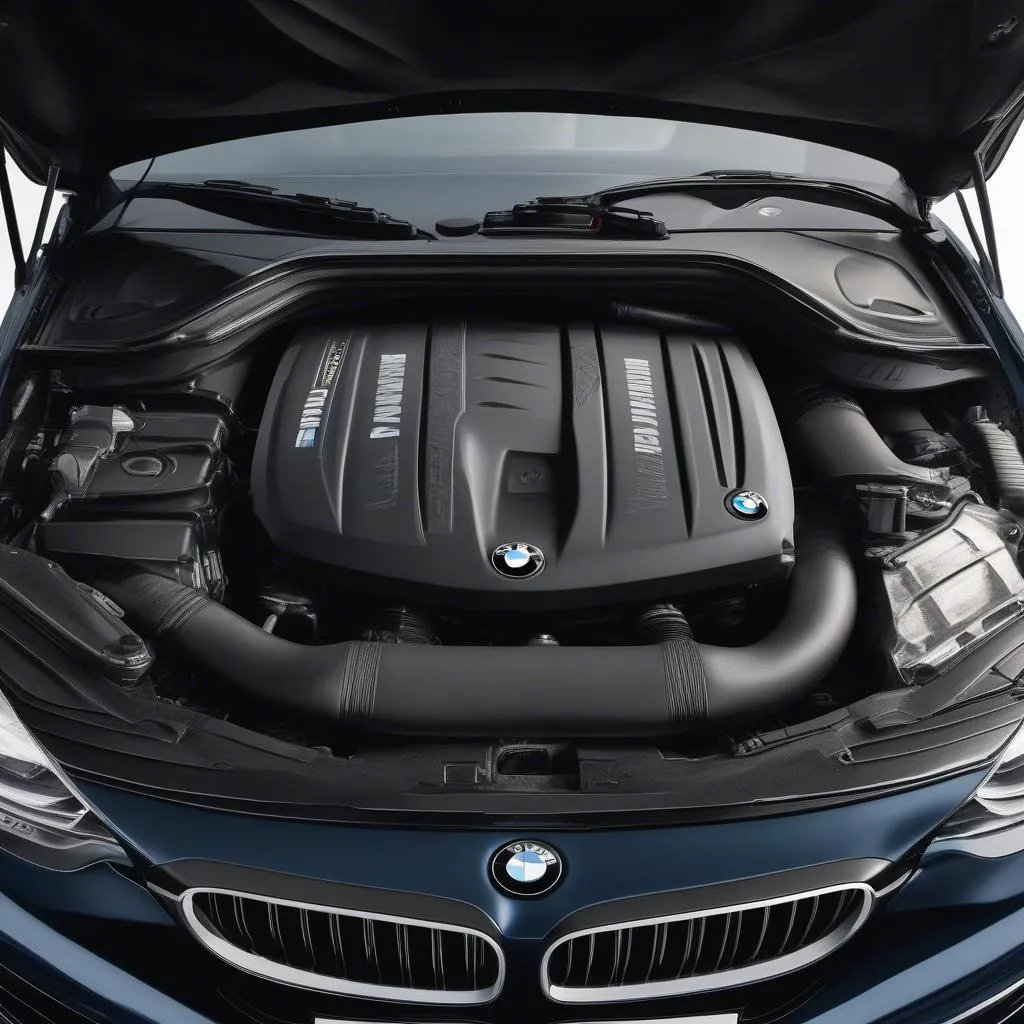Picture this: you’re cruising down Sunset Boulevard in your sleek BMW 3 Series, the California sun warming your face. Suddenly, the “check engine” light decides to ruin the vibe. A quick scan with your trusty OBD-II reader reveals the cryptic code “P2096”. Worry sets in. What does it mean? Is it a minor hiccup or a major engine meltdown?
Don’t panic just yet! This article is your one-stop guide to understanding and tackling the Bmw Obd Code P2096. We’ll delve into its meaning, causes, symptoms, and solutions, empowering you to take charge and get back on the road with confidence.
What Does “Bmw Obd Code P2096” Actually Mean?
In simple terms, the P2096 code signifies a “Post Catalyst Fuel Trim System Too Lean Bank 1”. Let’s break that down:
- Post Catalyst: Refers to the oxygen sensor located downstream of the catalytic converter.
- Fuel Trim System: This system regulates the air-fuel mixture entering your engine, ensuring optimal performance and emissions.
- Too Lean: Indicates an excess of air compared to fuel in the exhaust gases.
- Bank 1: Specifies the engine bank where the issue originates (typically the side with cylinder #1).
Essentially, the P2096 code suggests that your BMW’s engine control unit (ECU) is detecting an overly lean fuel mixture after the catalytic converter on Bank 1. This imbalance can lead to reduced engine performance, increased emissions, and potential damage to your catalytic converter if left unaddressed.
Why Is My BMW Throwing This Code?
Several culprits can trigger the P2096 code in your BMW, ranging from simple fixes to more complex issues. Here are some common causes:
- Vacuum Leaks: A leak in the intake manifold or vacuum hoses can disrupt the air-fuel ratio.
- Faulty Oxygen Sensor: A malfunctioning oxygen sensor (particularly the downstream one) can send inaccurate readings to the ECU.
- Exhaust Leaks: Leaks in the exhaust system, especially before the downstream oxygen sensor, can skew the exhaust gas readings.
- Fuel Delivery Problems: Issues like a clogged fuel filter, weak fuel pump, or malfunctioning fuel injectors can restrict fuel flow.
- EVAP System Malfunction: Problems with the evaporative emissions control (EVAP) system, such as a leaking purge valve, can introduce excess air into the system.
Symptoms Accompanying the P2096 Code
While the illuminated “check engine” light is the most obvious sign, other symptoms might accompany the P2096 code:
- Reduced Engine Performance: You might experience a noticeable decrease in power and acceleration.
- Rough Idle: The engine might idle erratically or vibrate more than usual.
- Poor Fuel Economy: A lean fuel mixture can lead to a drop in fuel efficiency.
- Hissing Sounds: Listen carefully for any hissing sounds coming from the engine, which could indicate a vacuum leak.
How to Diagnose and Fix the P2096 Code
It’s crucial to diagnose the root cause before attempting any repairs. Here’s a step-by-step approach:
- Visual Inspection: Begin by visually inspecting the vacuum hoses, intake manifold, and exhaust system for any obvious leaks or damage.
- Scan for Additional Codes: Sometimes, the P2096 code might be accompanied by other diagnostic trouble codes (DTCs) that can provide further clues.
- Check for Vacuum Leaks: Use a carburetor cleaner or a smoke machine to test for vacuum leaks.
- Inspect Oxygen Sensors: Inspect the downstream oxygen sensor (Bank 1) for signs of damage or contamination. Consider testing its functionality using a multimeter.
- Fuel System Inspection: Check the fuel pressure, fuel filter, and fuel injectors for proper operation.
If you’re not comfortable performing these diagnostics yourself, it’s best to consult a qualified BMW mechanic or technician.
 car diagnostics
car diagnostics
Don’t Ignore the P2096 Code!
While the P2096 code might seem like a minor inconvenience initially, ignoring it can lead to more severe problems and costly repairs down the line. Addressing the underlying issue promptly can save you headaches and keep your BMW running smoothly for miles to come.
FAQs about the Bmw Obd Code P2096
Q: Can I still drive my BMW with the P2096 code?
A: While you might be able to drive for a short distance, it’s not recommended. Driving with a lean fuel mixture can potentially damage your catalytic converter, leading to expensive repairs.
Q: Is it safe to clear the P2096 code myself?
A: While clearing the code will temporarily turn off the “check engine” light, the underlying problem will persist. It’s essential to address the root cause to prevent further issues.
Q: How much does it cost to fix the P2096 code?
A: The repair cost varies depending on the underlying cause. A simple vacuum leak repair might be relatively inexpensive, while replacing a faulty oxygen sensor or catalytic converter can be more costly.
Q: Can using a higher octane fuel fix the P2096 code?
A: No, using a higher octane fuel will not resolve the underlying issue causing the P2096 code. Stick to the octane rating recommended in your BMW’s owner’s manual.
 car engine
car engine
Need More Help with Your BMW’s Check Engine Light?
Experiencing other OBD codes like the P0010 or curious about BMW X3 OBD issues? Explore our other informative articles on BMW X3 OBD, P0010 OBD Code, and BMW OBD-II Fault Codes to expand your knowledge and troubleshooting skills.
For expert assistance with diagnostic tools or any car repair needs, our team of automotive specialists is always ready to assist you. Contact us on WhatsApp at +84767531508 for 24/7 support.
Let us help you get back to enjoying those scenic drives in your beloved BMW!